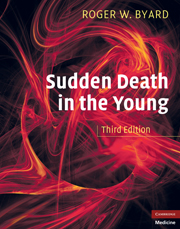Book contents
- Frontmatter
- Contents
- Preface to the third edition
- Reviews of the first and second editions
- Acknowledgments
- Section 1 Introduction
- Section 2 Unintentional trauma
- Section 3 International trauma
- Section 4 Natural disease
- Section 5 Maternal, fetal, and neonatal conditions
- Section 6 Sudden infant death syndrome
- Appendices
- Index
Preface to the third edition
Published online by Cambridge University Press: 05 January 2013
- Frontmatter
- Contents
- Preface to the third edition
- Reviews of the first and second editions
- Acknowledgments
- Section 1 Introduction
- Section 2 Unintentional trauma
- Section 3 International trauma
- Section 4 Natural disease
- Section 5 Maternal, fetal, and neonatal conditions
- Section 6 Sudden infant death syndrome
- Appendices
- Index
Summary
Since the publication of the second edition of this text the subspecialization of pediatric forensic pathology has been under intense scrutiny. Pediatric cases have always been among the most difficult in forensic practice and the situation continues. One of the problems is the relative rarity of many of the described entities, which means that pathologists and clinicians sometimes have difficulty maintaining their expertise. This is one of the justifications for such a text as it provides descriptions and illustrations (where possible) of many obscure and complex conditions that are restricted to childhood. Thus, there has often deliberately been greater attention paid to rarer disorders, as these are the ones where the most guidance is required, to assist pathologists, lawyers, and clinicians in understanding diseases and injuries that may be encountered only infrequently.
The third edition has also extended the range of conditions and cases to include those occurring in fetal, perinatal, neonatal, infant, childhood, adolescent, and young adult life – hence the change of title to Sudden Death in The Young. Specifically, there has been a chapter added on fetal, perinatal, and obstetric conditions, and the upper age limit has been extended to include young adults in their late twenties and early thirties. The reasons for this are reasonably obvious, as fetal and obstetric problems present in everyday forensic practice, and conditions that affect older adolescents are often identical to those affecting young adults.
- Type
- Chapter
- Information
- Sudden Death in the Young , pp. ix - xPublisher: Cambridge University PressPrint publication year: 2010



